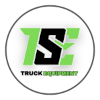Curious about the cutting-edge innovations transforming the truck equipment industry? Discover the latest advancements that could revolutionize your fleet operations! The truck equipment industry is constantly evolving, with new innovations emerging to enhance efficiency, safety, and sustainability. Here are some of the latest truck equipment innovations you should know about:
Electric and Hybrid Powertrains
- Benefit: Reducing emissions and fuel costs while maintaining performance.
- Details: Electric and hybrid powertrains are revolutionizing the trucking industry by offering a more sustainable and cost-effective alternative to traditional diesel engines. These vehicles produce fewer emissions, contribute to cleaner air, and can significantly reduce fuel costs over time. As battery technology continues to improve, the range and performance of electric trucks are expected to match or even exceed those of conventional trucks.
Advanced Telematics Systems
- Benefit: Real-time data on vehicle performance, driver behavior, and route efficiency.
- Details: Advanced telematics systems provide comprehensive insights into various aspects of fleet operations. By collecting and analyzing data on vehicle performance, driver behavior, and route efficiency, these systems enable fleet managers to make informed decisions that can enhance productivity and reduce operational costs. Features such as GPS tracking, fuel monitoring, and maintenance alerts help in optimizing fleet performance and ensuring timely interventions.
Autonomous Driving Technology
- Benefit: Enhancing safety and efficiency through automation.
- Details: Autonomous driving technology is making significant strides in the trucking industry. While fully autonomous trucks are still in development, many semi-autonomous features are already being implemented. Technologies such as lane-keeping assist, adaptive cruise control, and automated braking systems are designed to enhance safety and reduce driver fatigue. These advancements are expected to lead to safer roads and more efficient logistics operations.
Smart Trailer Technology
- Benefit: Monitoring trailer conditions, load status, and optimizing cargo space.
- Details: Smart trailer technology incorporates sensors and IoT devices to monitor various aspects of the trailer, such as temperature, humidity, and load distribution. This technology helps in optimizing cargo space, ensuring that goods are transported under ideal conditions, and reducing the risk of damage. Real-time monitoring also allows for quick adjustments and better planning, improving overall supply chain efficiency.
Improved Safety Features
- Benefit: Advanced braking systems, collision avoidance, and driver assistance technologies.
- Details: The latest safety features in truck equipment include advanced braking systems, collision avoidance technologies, and driver assistance systems. These innovations are designed to prevent accidents and protect both the driver and the cargo. Enhanced visibility systems, such as 360-degree cameras and blind-spot detection, further contribute to safer driving conditions.
Lightweight Materials
- Benefit: Increasing fuel efficiency and payload capacity by reducing vehicle weight.
- Details: The use of lightweight materials, such as aluminum and carbon fiber, in truck construction is becoming more prevalent. These materials reduce the overall weight of the vehicle, leading to improved fuel efficiency and increased payload capacity. Lightweight trucks can also reduce wear and tear on roads, contributing to lower maintenance costs and longer-lasting infrastructure.
Smart Sensors
- Benefit: Monitoring various aspects of the truck’s performance to reduce downtime and enhance preventive maintenance.
- Details: Smart sensors are integrated into various components of the truck to monitor performance indicators such as tire pressure, engine health, and brake condition. These sensors provide real-time data that can be used to schedule preventive maintenance, thereby reducing the risk of unexpected breakdowns and minimizing downtime. By proactively addressing potential issues, fleet managers can ensure that their vehicles remain in optimal condition.
Conclusion
Keeping up with the latest truck equipment innovations can greatly enhance the performance and efficiency of your fleet. Staying up-to-date with these advancements can help your business stay competitive and efficient. For more information on the latest truck equipment advancements and how they can benefit your business, contact us today!


